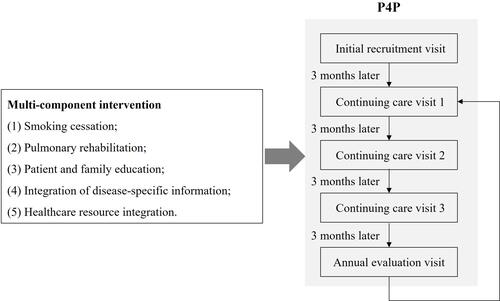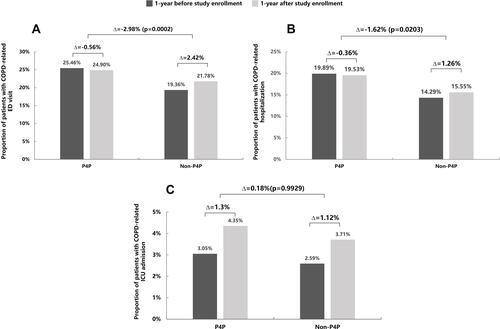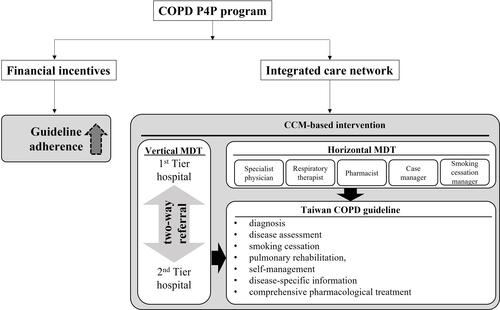Figures & data

Figure 2 Flowchart of the pay-for-performance (P4P) program for COPD. Once enrolled into P4P program at the initial enrollment visit, the P4P patient visited a physician once each quarter, completing 3 regular care visits and 1 annual evaluation visit. Multicomponent intervention for P4P was governed by Taiwan COPD guideline recommendations, which considered: (1) smoking cessation, (2) pulmonary rehabilitation, (3) patient and family education, (4) integration of disease-specific information, and (5) health care resource integration.

Table 1 Characteristics of Patients with COPD for Unmatched and Matched Samples
Figure 3 Changes in COPD-related ED visit, hospitalization, and ICU admission in non-P4P group and P4P group at 1-year before and after study enrollment. (A) COPD-related ED visit; (B) COPD-related hospitalization; (C) COPD-related ICU admission.

Table 2 Number of Patients and Prevalence of the Outcome Variables (COPD-Related ED Visits, COPD-Related Hospitalizations, and COPD-Related ICU Admissions). And the DID Analysis Results for the Effects of the COPD P4P Program with GEE Model
Figure 4 Possible mechanism underlying the effectiveness of COPD P4P program. Financial incentives encourage physicians to change their behavior and improve guideline adherence, and an integrated care network is established by two types of MDT (vertical MDT and horizontal MDT) in the COPD P4P program to achieve CCM-based intervention according to COPD guideline recommendations, thereby preventing COPD exacerbation.


